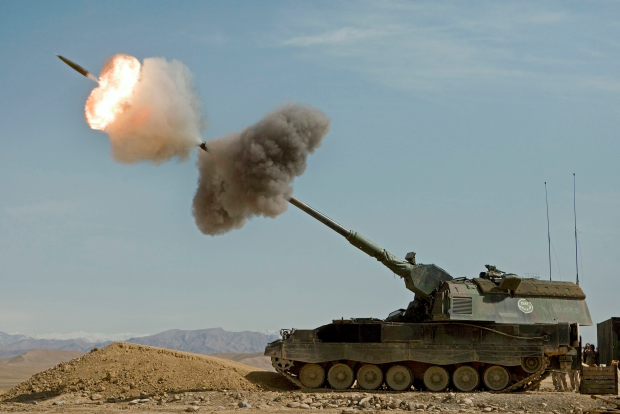Artillery Lovers Group
Hobbies & Interests
Originally applied to any group of infantry primarily armed with projectile weapons, artillery has over time become limited in meaning to refer only to those engines of war that operate by projection of munitions far beyond the range of effect of personal weapons. These engines comprise specialised devices which use some form of stored energy to operate, whether mechanical, chemical, or electromagnetic. Originally designed to breach fortifications, they have evolved from nearly static installations intended to reduce a single obstacle to highly mobile weapons of great flexibility in which now reposes the greater portion of a modern army's offensive capabilities.
The Panzerhaubitze 2000 ("armoured howitzer 2000"), abbreviated PzH 2000, is a German 155 mm self-propelled howitzer developed by Krauss-Maffei Wegmann (KMW) and Rheinmetall for the German Army. The PzH 2000 is one of the most powerful conventional artillery systems deployed in the 2010s. It is particularly notable for a very high rate of fire; in burst mode it can fire three rounds in 9 seconds, ten rounds in 56 seconds, and can—depending on barrel heating—fire between 10 and 13 rounds per minute continuously.[1] The PzH 2000 has automatic support for up to 5 rounds of Multiple Rounds Simultaneous Impact (MRSI). The replenishment of shells is automated. Two operators can load 60 shells and propelling charges in less than 12 minutes. PzH 2000 has also been selected by the armies of Italy, Netherlands, Greece, Lithuania and Croatia, and more orders are probable as many NATO forces replace their M109 howitzers.
Type: Self-propelled artillery
Place of origin: Germany
Service history
Wars: War in Afghanistan
Production history
Designed: 1996
Unit cost: US$4.5 million
Produced: 1998-present
Specifications
Weight Combat: 55.8 t (61.5 short tons)
Length: 11.7 m (38 ft 5 in)
Width: 3.6 m (11 ft 10 in)
Height: 3.1 m (10 ft 2 in)
Crew: 5 (commander, driver, gunner, and two loaders)
Armor: welded steel, 14.5 mm resistant
additional bomblet protection
Main armament: Rheinmetall 155 mm L52 Artillery Gun(60 rounds)
3 rounds in 9.0 seconds (Burst)
10 round/min
Secondary armament: Rheinmetall MG3 7.62 mm machine gun
Engine: MTU 881 Ka-500 1,000 PS (986 hp, 736 kW)
Power/weight: 17.92 PS/t
Suspension: torsion bar
Operational range: 420 km (261 mi)
Speed Road: 67 km/h (41 mph)
Off-road: 45 km/h (28 mph)







You know it's dangerous when it has a really long German name.
Oh man, you didnt see LONG german names)